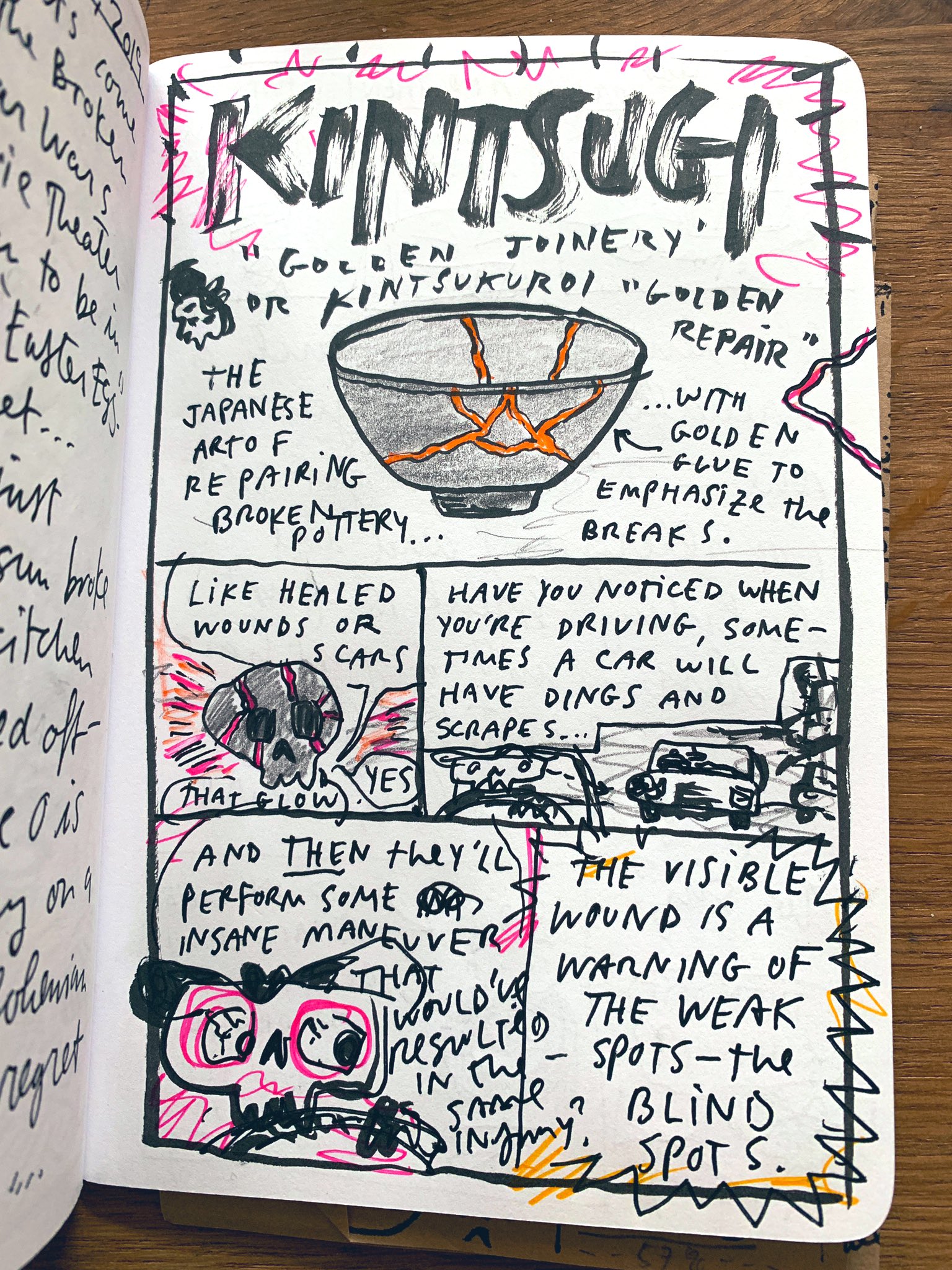
I was inspired to draw out this matrix after stumbling upon a website for a show called “Less Than Perfect” that ran at the Kelsey Museum of Archeology in 2016. The exhibition was organized around three themes:
- Failed Perfection presents objects that failed in production and explores how researchers use them to study ancient economy and technologies.
- Deliberate Imperfection features beautiful and finely crafted objects whose makers purposely introduced asymmetries or other unexpected elements into their products—and considers why artists may choose to make imperfect things.
- Repairing Perfection highlights artifacts that were repaired in antiquity and asks why and how individuals worked to restore usefulness and beauty to certain broken, worn out, or damaged objects.
A lot of what I love in art is “deliberate imperfection,” which you see in everything from Japanese wabi-sabi to Navajo rugs to punk rock.
Mistakes or “happy accidents” that don’t get thrown out, like mishearings that lead to new ideas.
Chance operations, introductions of asymmetry, invitations to weirdness and error, and what Sally Mann calls “praying to the angel of uncertainty” in Hold Still:
“I tried to remain flexible and open to the vagaries of chance; like Napoleon, I figured that luck, aesthetic luck included, is just the ability to exploit accidents. I grew to welcome the ripply flaws caused by a breeze or tiny mote of dust, which ideally would settle right where I needed a comet-like streak, or the emulsion the peeled away from the plate in the corner where I hadn’t liked that telephone line anyway. Unlike the young narrator in Swann’s Way praying for the angel of certainty to visit him in his bedroom, I found myself praying for the angel of uncertainty. And many times she visited my plates, bestowing upon them essential peculiarities, persuasive consequence, intrigue, drama, and allegory.”
I also think of Lee “Scratch” Perry and his mystical approach to the studio:
He would often “bless” his recording equipment with mystical invocations, blow ganja smoke onto his tapes while recording, bury unprotected tapes in the soil outside of his studio, and surround himself with burning candles and incense, whose wax and dust remnants were allowed to infest his electronic recording equipment. He would also spray tapes with a variety of fluids, including urine, blood and whisky, ostensibly to enhance their spiritual properties. Later commentators have drawn a direct relationship between the decay of Perry’s facility and the unique sounds he was able to create from his studio equipment.
Repair, healing or mending, and leaving the repair visible, a la kintsugi:

I got to thinking about all this because my mom texted me a cool diagram of a loom from an exhibit of Navajo Weavings at the Colonial Williamsburg Art Museum and I asked her if she knew about the deliberate imperfections they introduce into their rugs:
In Navajo culture, rug weavers would leave little imperfections along the borders in the shape of a line called ch’ihónít’i, which is translated into English as “spirit line” or “spirit pathway. The Navajos believe that when weaving a rug, the weaver entwines part of her being into the cloth. The spirit line allows this trapped part of the weaver’s spirit to safely exit the rug….
The Navajos also believe that only God is perfect and that humans cannot achieve the same perfect level. So they make sure to leave little imperfection in anything they create. Usually, one has to look very close to find the imperfection, so it does not detract from the beauty of the item. It might be a loose piece of yarn, or a different colored bead.
(That whole post is worth reading.)
Filed under: imperfection